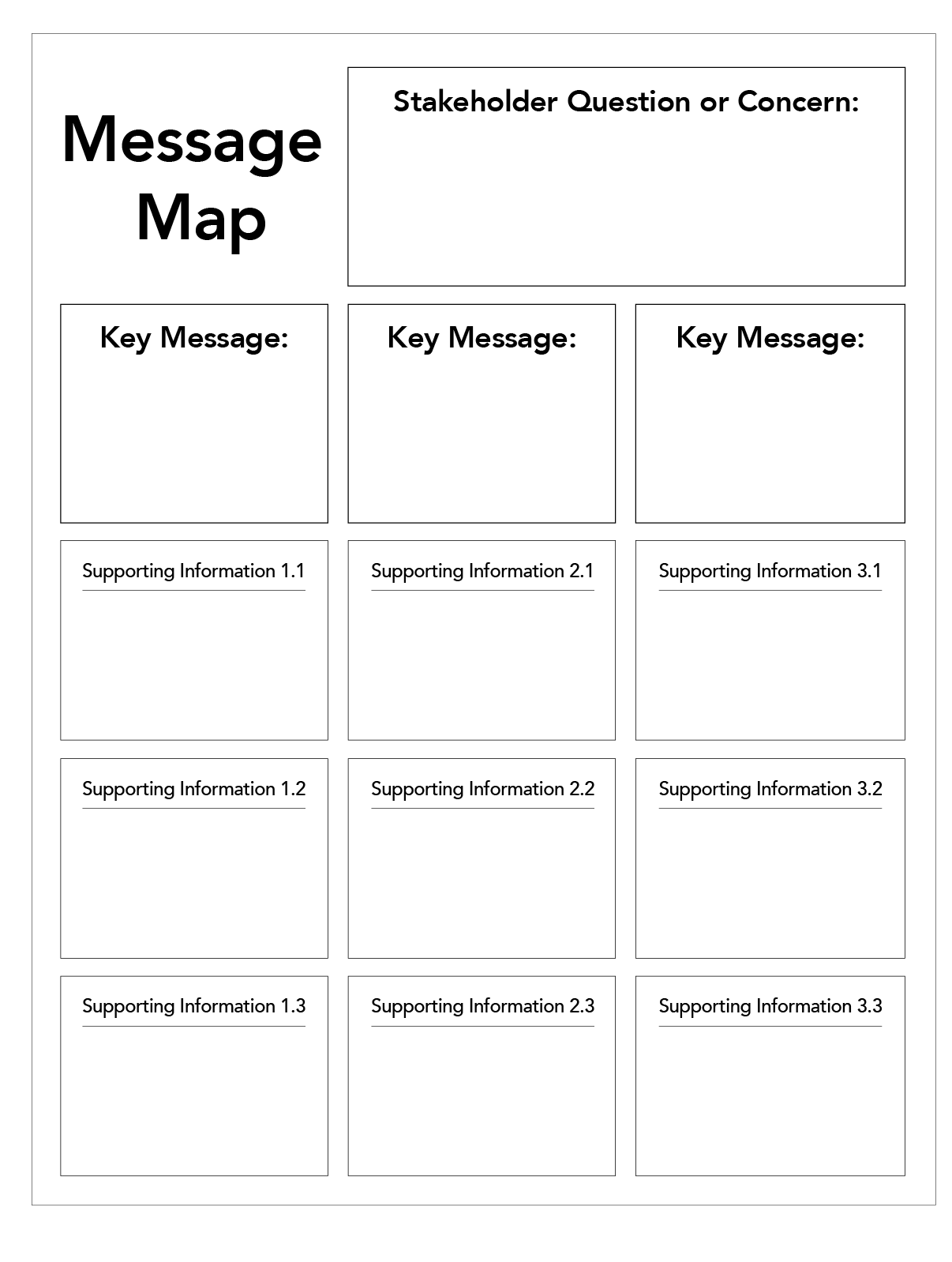Preparing to Respond: Four Steps to Developing a Crisis Communication Plan
When food is your business, it is important to be prepared for any situation that might affect your business and/or customers. This includes crisis situations such as natural disasters, chemical and biological threats, biosecurity threats, intentional contamination/threats, and foodborne outbreaks.
Food and agricultural business owners should have disaster preparedness and response plans to mitigate the negative effects of a crisis. Communication is a key component of an effective plan. A carefully designed and practiced crisis communication plan will help you respond if disaster strikes.
Food safety issues (e.g., foodborne outbreaks, recalls) and other crisis events (e.g., pandemics) can scare consumers and erode their trust in the industry if not handled properly. The overarching goal of crisis communication is to enhance understanding while building trust and influencing the behavior of your target audience (Covello, 2005). A crisis communication plan can help build transparency and trust with your customers/community. Your plan also can help counteract misinformation or negative press about your business and/or industry. It is important to be prepared for crisis situations in advance so your response is quick and effective. Covello and Allen (1988) list seven cardinal rules for effective communication in crisis situations:
- Involve target audiences as partners in the communication.
- Allow target audiences to participate in decisions that directly affect them.
- Prepare and revise risk communication strategies.
- Develop a unique plan for each possible scenario.
- Pay attention to your audience’s concerns and questions.
- Gain an understanding of the public’s beliefs about the event/risks. Psychological characteristics are more important than the technical details of the risk.
- Always be honest.
Your crisis communication plan should be a tangible document that is readily available to all who are involved in your business. Use the following four steps to develop a calculated, credible response to crisis situations.
Step One: Assemble a Team
At the foundation of a strong crisis communication plan is a team of experts on all aspects of your business. This includes “management, operations, internal (including labor relations in union environments) and external communication, customer service, [and] legal” (Whaling, 2010, para. 3). When a crisis situation occurs, the team is already in place to jump into action. Be sure to list your team members with their contact information at the beginning of your plan.
Step Two: Designate a Spokesperson
Once you have assembled your crisis communication team, designate a spokesperson. It is important for the designated spokesperson to be visible to your target audience before a crisis situation (Whaling, 2010). If your audience is familiar with the person delivering your messages, they are more likely to believe the message (Covello, 2005). Depending on the size and scale of your operation, you may need multiple spokespeople for your different modes of communication. It is also important to identify a backup communicator to step in if needed (Whaling, 2010).
Step Three: Establish an Internal Chain of Command
Once your team is in place, you need to develop a set of policies and procedures to fall back on in a time of crisis. The media will act quickly when disaster strikes, so you must be prepared to respond appropriately in order to protect your business and brand. Time is of the essence after a disaster—it is important that you respond quickly before people begin to voice their negative opinions about your business on social media (Whaling, 2010).
Step Four: Prepare and Practice for Potential Disaster Situations
After you have assembled your crisis communication team and established policies and procedures in case a disaster strikes, you need to prepare and practice your message for any potential disasters. When preparing crisis communication documents, consider addressing the following questions:
- What are the risks that could potentially affect your business?
- What needs to be done to mitigate the risk, emergency, or unforeseen event?
- Who needs to know (clients, suppliers, consumers, regulatory agencies, law enforcement, legal, emergency response, or media)?
- Who is the company spokesperson (what are their strengths and weaknesses)?
- Who needs to act to mitigate the disaster or unforeseen event?
Once you and your team have considered these questions, then begin to develop a response to each possible disaster by following the “rule of three”: for each question or concern, develop three key messages with three items of support for each message. A message map is a great way to organize your thoughts and strategy (Figure 1). Additionally, risk communication templates can be used, depending on the severity of the situation and the response you hope to elicit.

It is important to remember that any crisis situation will produce stress, and stress induces emotions (anxiety, worry, anger, etc.). Stress and emotion together create mental noise, which alters the way people process information (Covello, 2010). Some ways to reduce mental noise in your communication plan include:
- Stick to the “rule of three.”
- Be the first to respond, and respond often. People focus on what they hear first and last.
- Focus on the positives in the situation. Provide a sense of hope, community, safety, calm, and connectedness.
- Include credible sources. It takes three to four positive credible sources to offset one negative credible source.
- Use straightforward, short, and easy-to-understand words and sentences. People process information at well below their education level.
A well-developed communication plan is useless unless you practice ahead of an actual crisis situation. Moreover, it is important to revisit, update, and practice your crisis communication plan periodically to ensure you are communicating the most up-to-date information. As you role-play through your policies and procedures, be sure that your spokesperson has the opportunity to practice in front of a camera. People tend to behave differently when they are being filmed, and practicing provides the opportunity for reflection and adjustment before a real disaster strikes.
A crisis communication plan is an essential component to any food business operation. When developing that plan, it is important to remember these four steps.
- Assemble a crisis communication team and have a designated spokesperson.
- Establish policies and procedures.
- Develop strategies for multiple crisis scenarios, using the “rule of three.”
- Practice, practice, practice.
With a little preparation, you and your business will be ready to jump into action when disaster strikes.
For More Information
Carley C. Morrison, Assistant Professor, School of Human Sciences [email protected]
References and resources
Covello, V. T. (2005). Risk communication in environmental health: From local to global (H. Frumkin, Ed.). New York: Jossey Bass/John Wiley and Sons, Inc.
Covello, V. T. (2010). Strategies for overcoming challenges to effective risk communication. In Handbook of risk and crisis communication (pp. 155–179). Routledge.
Covello, V. T. (n.d.). Basic risk communication/message mapping templates. The Council of State Governments.
Covello, V. T., & Allen, F. (1988). Seven cardinal rules of risk communication. U.S. Environmental Protection Agency. Office of Policy Analysis, Washington, DC.
Whaling, H. (2010, April 12). 5 steps to develop a crisis communication plan. prTini.
This material is based upon work supported by USDA/NIFA under Award Number 2018-70027-28585.
Publication 3498 (09-23)
By Carley C. Morrison, PhD, Assistant Professor, Human Sciences; Courtney A. Crist, PhD, Assistant Extension Professor, Food Science, Nutrition, and Health Promotion; Elizabeth Canales, PhD, Assistant Professor, Agricultural Economics; J. Byron Williams, PhD, Associate Extension Professor, Food Science, Nutrition, and Health Promotion.
The Mississippi State University Extension Service is working to ensure all web content is accessible to all users. If you need assistance accessing any of our content, please email the webteam or call 662-325-2262.




